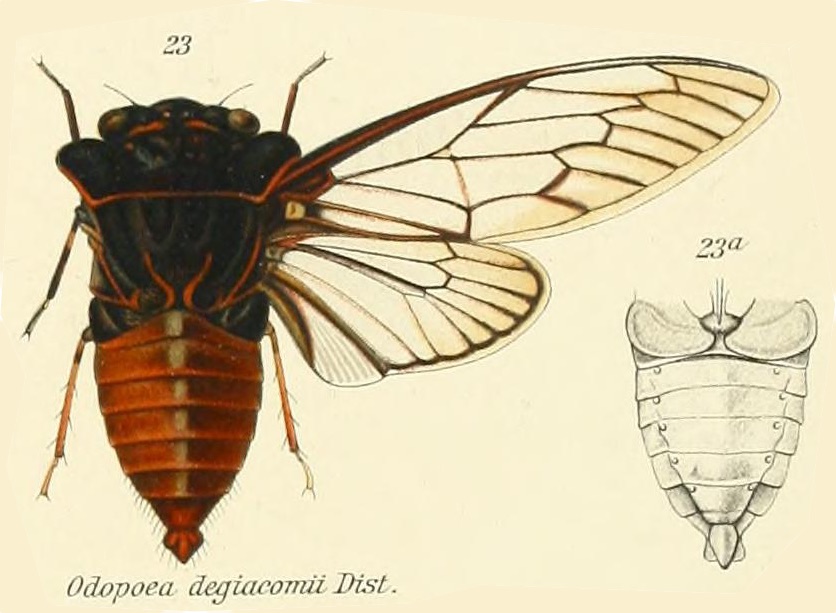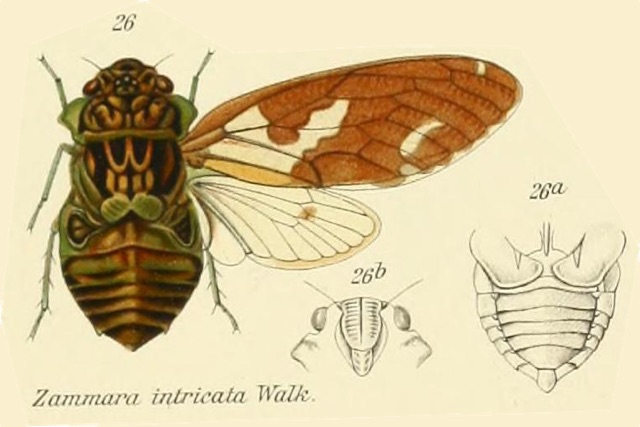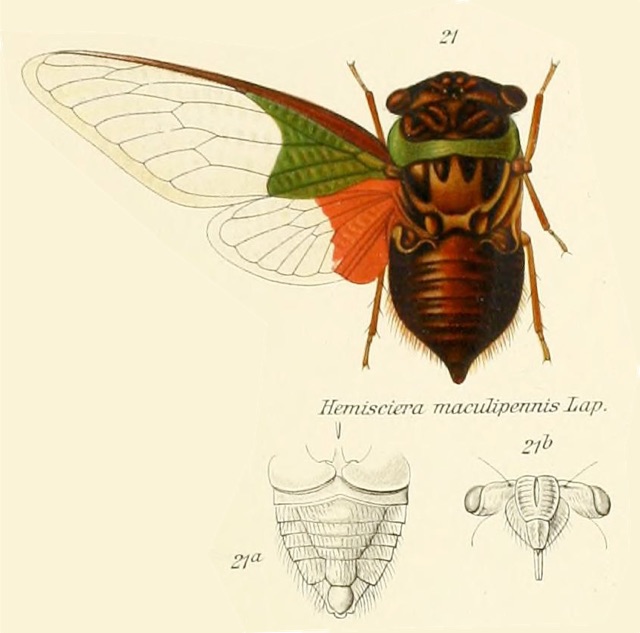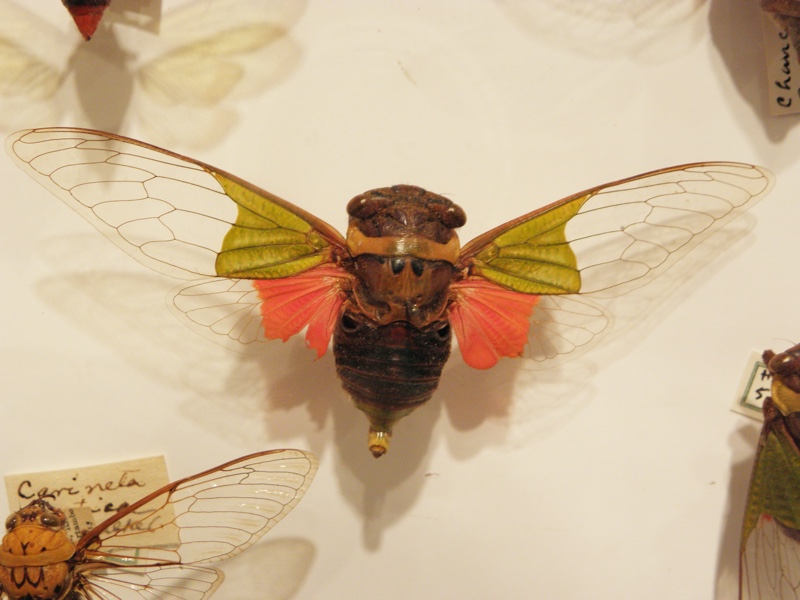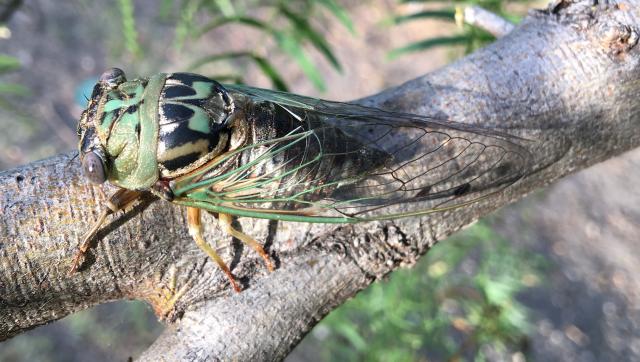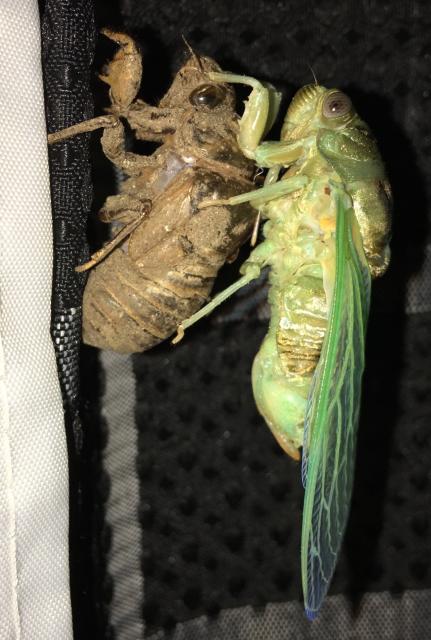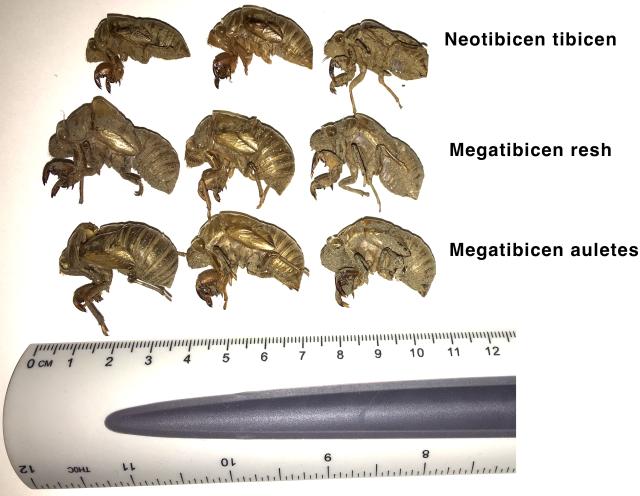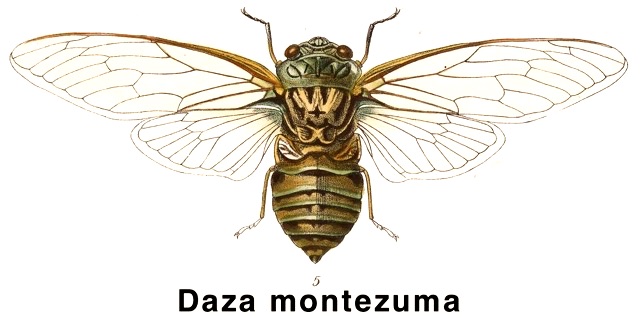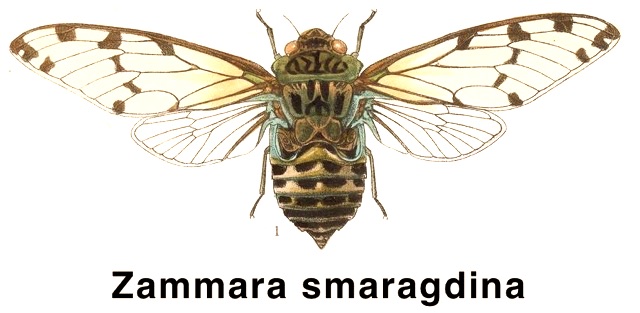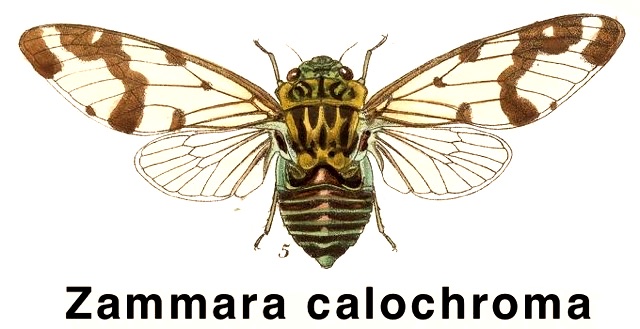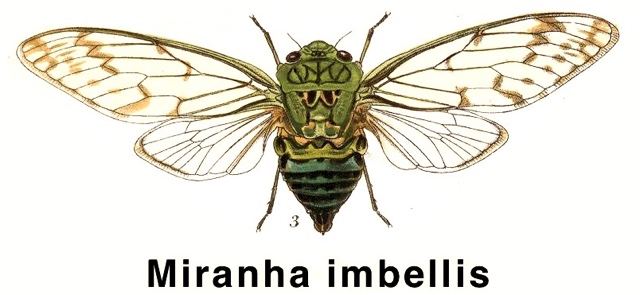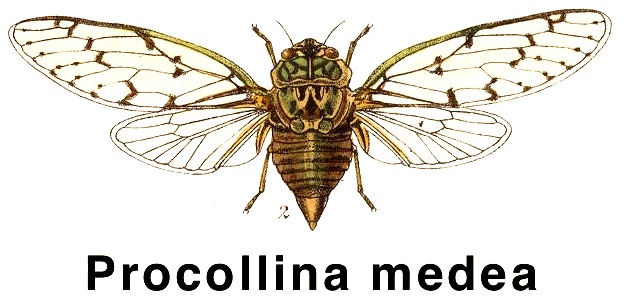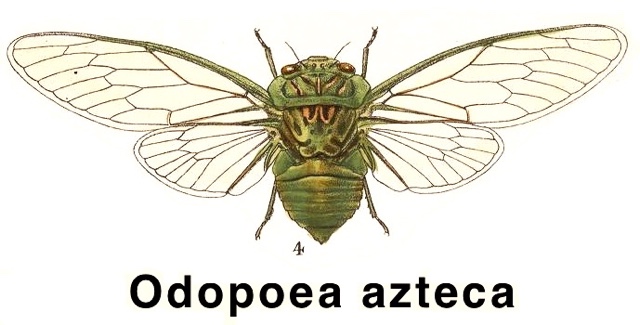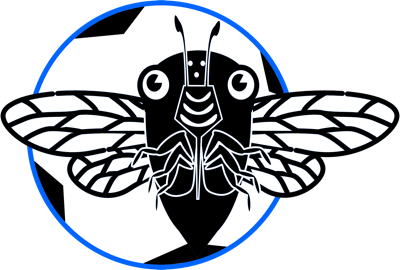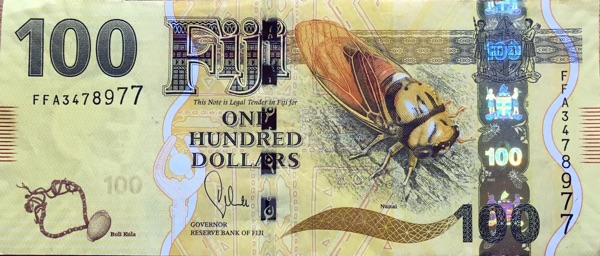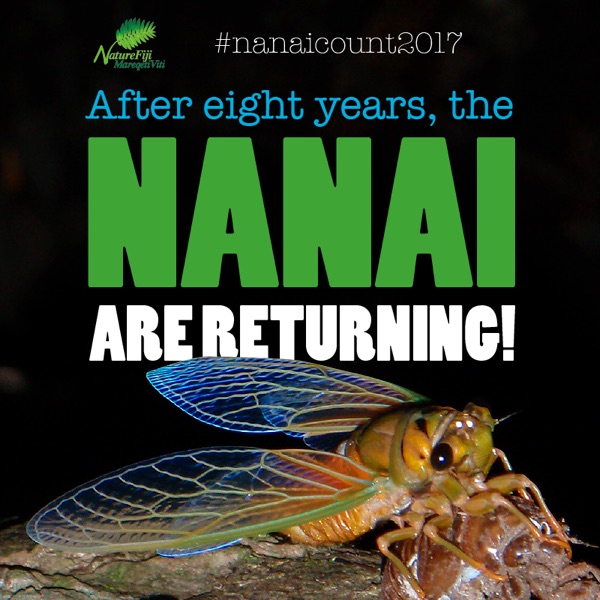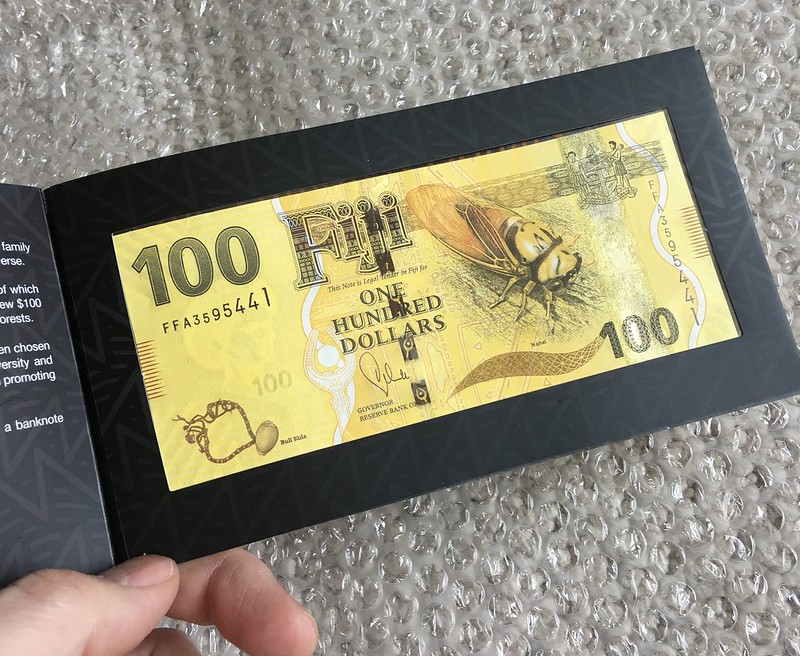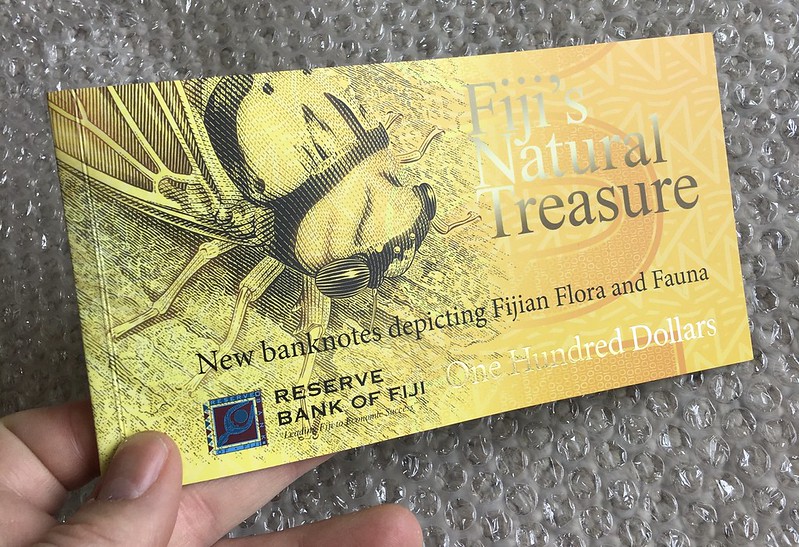Once known as Gaeana stellata — yes, its name has changed — Ambragaeana stellata (Walker, 1858) can be found in China, Thailand, India, and likey other nations the south-eastern part of Asia. Ambragaeana cicadas belong to a group nicknamed the “butterfly cicadas” because of the butterfly-like colors and patterns of their wings.
“Stellata”, I believe, is derived from the Latin word for “star” — it doesn’t take much imagination to see the “stars” in the wings of this cicada.
Scientific classification:
Family: Cicadidae
Subfamily: Cicadinae
Tribe: Gaeanini
SubTribe: Gaeanina
Genus: Ambragaeana
Species: Ambragaeana stellata (Walker, 1858)
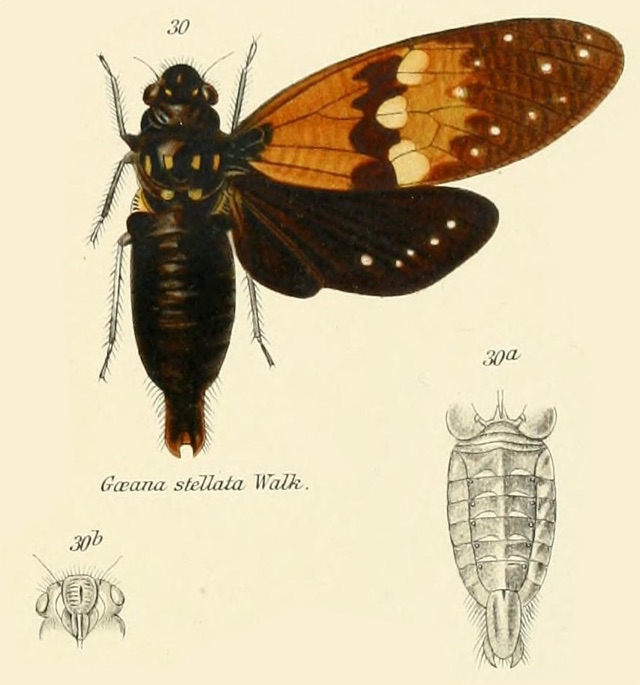
The image says Gaeana stellata, but the newest name for this cicada is Ambragaeana stellata.
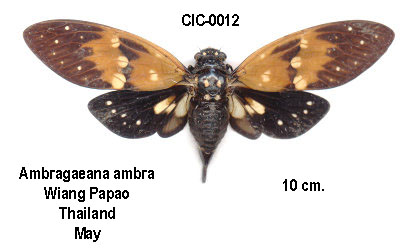
Photo by Michel Chantraine.
Worth noting: There are two sub-species of Ambragaeana.
References:
- The illustration comes from the journal Genera Insectorum, and a specific article from 1914 by W. L. Distant titled Homoptera. Fam. Cicadidae, Subfam, Gaeaninae. Read it on the Biodiversity Heritage Library website.
- Species name information/verification comes from Allen Sanborn’s Catalogue of the Cicadoidea (Hemiptera: Auchenorrhyncha).
